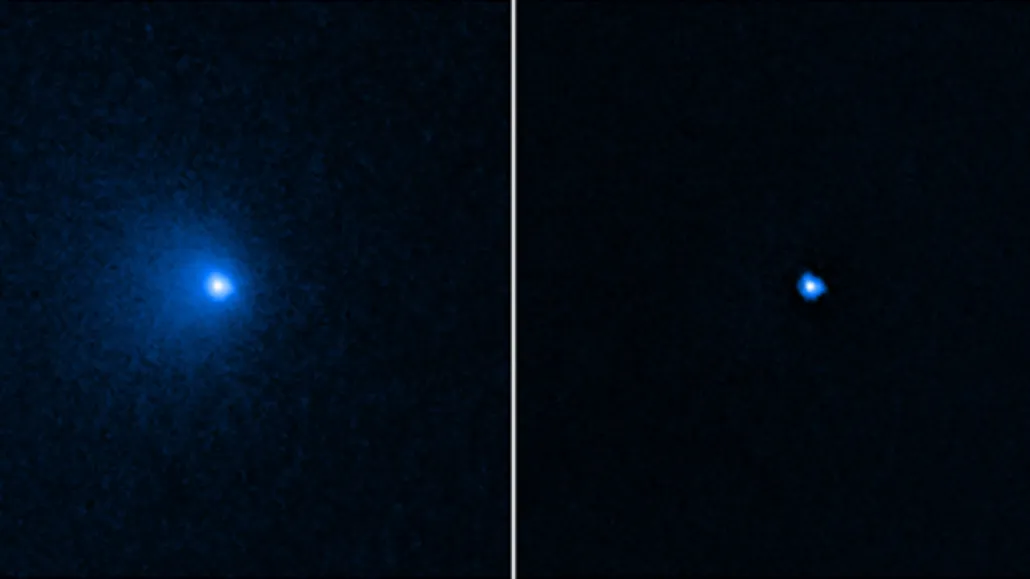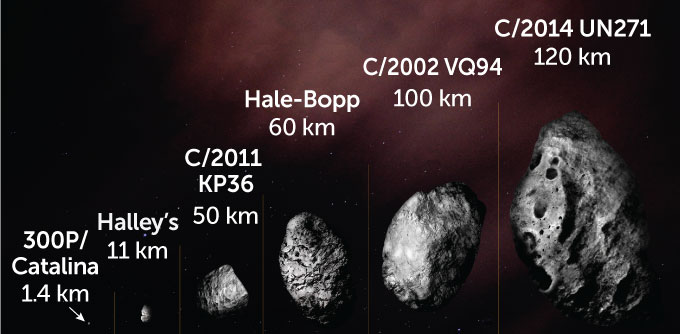This is the biggest known comet in our solar system
Its nucleus is about twice the width of Rhode Island and darker than coal

When the dust cloud surrounding comet Bernardinelli-Bernstein (left) is digitally removed, the bare nucleus (right) measures about 120 kilometers across.
SCIENCE: NASA, ESA, Man-To Hui/Macau Univ. of Science and Technology, D. Jewitt/UCLA; IMAGE PROCESSING: Alyssa Pagan/STScI








